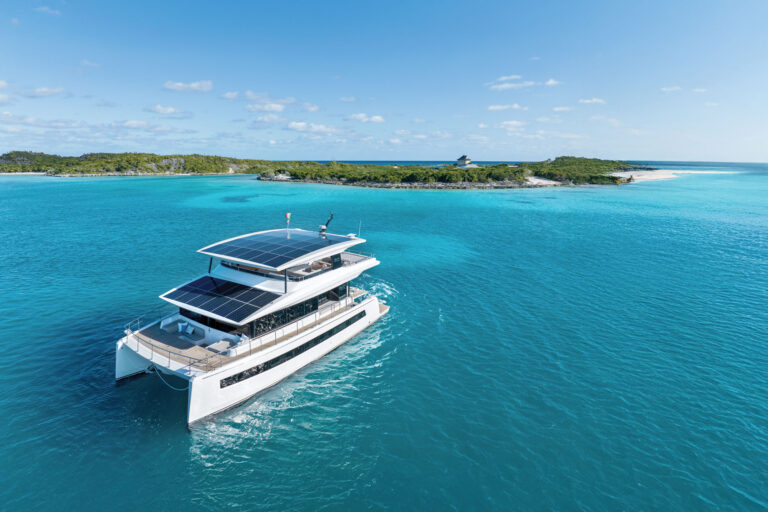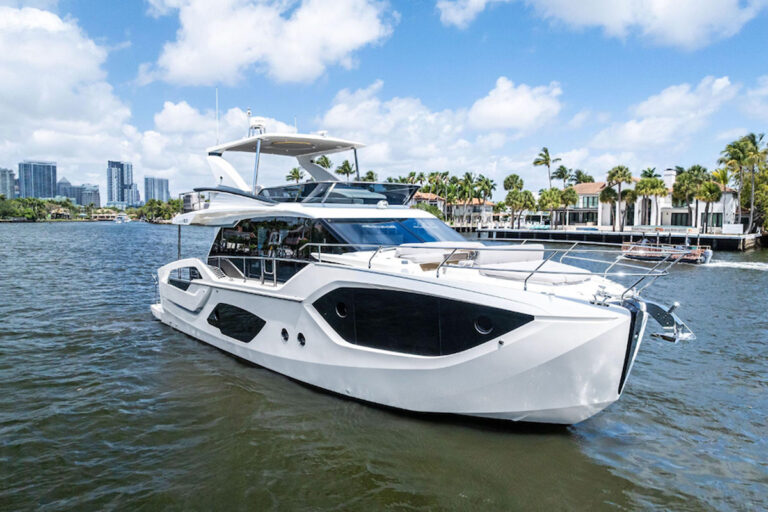If you plan to head out on an extended offshore passage, obtaining weather data is as critical as ensuring your provisions are packed and your engines are running smoothly. An accurate understanding of weather patterns will not only help you navigate out of foul weather unfolding around you, it will help you accurately plan your cruise for the forthcoming week.
Thanks to advances in marine weather electronics such as weatherfax, satellite communications and imagery software, weather information is available to yachtsmen at the touch of a button. If you cannot interpret the information that comes over your weatherfax or satellite overlay and apply it to your situation, however, today’s technology will not be of much use to you-or your vessel.
When piecing together a weather forecast, several important charts will help you properly analyze conditions. Charts for surface-weather analysis, surface-weather prognosis and extended surface prognosis will help you make sense of atmospheric weather conditions just above the water. Wave-height analysis and wave prognosis, on the other hand, will keep you abreast of what’s happening on the water. Finally, radar charts and satellite weather pictures are good for providing accurate, up-to-the-minute information about local disturbances.
Now that you know which charts you’ll need, the only thing left to do is make sense of them.
ABOVE THE WATER
Surface-weather analysis, a valuable tool for assessing basic patterns, reflects current weather conditions, which are usually measured a few hours before they are broadcast. Surface-weather analysis charts indicate wind velocity, wind direction, barometric pressure and frontal systems.
Wind rose symbols are used to express the velocity and direction of wind (useful to powerboaters and sailors alike). Though wave-analysis charts can shed more light on the actual size of the seas, wind readings provided by surface-weather analysis should still give you a fairly good idea of what you’re in for.
Systems of high and low barometric pressure are indicated by an “H or an “L, respectively. Closed circular lines around these letters are isobars; they indicate areas of equal barometric pressure. Isobars begin at the center of a system and move outward. As they do, the system’s pressure either rises or falls (depending on whether it is a high- or low-pressure system), with the value of each isobar labeled on the chart. Barometric pressure at the center of the system is underlined.
Beware if you see a line or dashed circle around a system. These indicate gale conditions, where wind reaches speeds greater than 34 knots.
While looking at the chart, you’ll also notice symbols signifying fronts. A line with triangles signifies a cold front. A line with semicircles represents a warm front. A line with triangles and semicircles pointing in opposite directions marks a stationary front, which is created when two air masses of differing temperatures meet and neither overtakes the other. A line with triangles and semicircles on one side indicates an occluded front, which is formed when a cold front overtakes a warm or stationary front. These shapes, in addition to identifying the front, indicate its direction of movement. (If the triangles of a cold front are pointing west, for instance, west is where the front is headed.) The speed of the frontal system is indicated in knots. Keep an eye on a stationary front. It is a potential weather pattern that can dissipate or develop into adverse weather pattern. Also, it is important not just to determine if a front is warm or cold. The temperature of the air mass the front will collide with needs to be reviewed, as well. A general rule is that the greater the difference in temperature between the front and air mass, the more severe the developing weather pattern will be. This should help make planning your trip-and avoiding rough conditions-easier.
You can also view fronts with help from frontal analysis, a component of surface-weather analysis. A frontal-analysis chart does not show isobars or wind roses. It shows only low-pressure regions (storms), high-pressure regions (fair weather) and, of course, fronts. Knowing where fronts are, where they’re going and what’s behind them will help you find fair weather.
A surface-weather prognosis chart works using the same symbols. This chart provides information for predicted weather patterns, usually for 12- or 24-hour periods. In some regions, the outlook may extend to 36 hours or longer.
Finally, an extended surface prognosis chart provides two- to five-day forecasts of positions of fronts and pressure systems.
Satellite and radar images, typically overlaid on surface-weather analysis charts, also contain useful information. They provide the images that arm-chair meterologists may be familiar with from watching the Weather Channel.
Satellite weather pictures provide information pertaining to cloud cover, fog, positions of disturbances and tropical cyclones. Infrared cameras differentiate between cold and warm air masses and systems.
Radar charts show localized areas of storm development and are especially useful in spotting local thunderstorms.
The radar chart is handy for coastal trips. If you are running from New England to Florida, for instance, you’ll be able to see areas of strong precipitation and perhaps alter your schedule. At the very least, you’ll know what to expect. Also helpful is the ability to track the movement of storm cells. Again, being able to download data regularly may prove more valuable than just the NOAA forecast and storm warning.
ON THE WATER
Wave-height analysis charts, updated a few hours before broadcast, show current height contours of waves and the direction of their movement. The data you see are really averages; calculations for a given area are based on information gathered from weather satellites and observation stations aboard ships.
Heavy arrows represent the directions waves are flowing, and black dots show areas of confused seas. These seas are usually caused by strong shifts in wind and often indicate active weather fronts. Smaller, wavy arrows indicate the direction of the local sea state, and straight arrows indicate larger seas. Wave height for a given spot appears beside its arrow.
A wave-prognosis chart is another piece of the puzzle. It differs from wave-height analysis in that it expresses the predicted height and direction of waves, usually up to 24 hours in advance. In addition, the period between wave sets is listed, providing useful information about how severe the pattern will be. Bear in mind that larger swells are often more bearable and easier on the boat than shorter, stacked swells are. Recently, before a trip to Antigua from Tortola, British Virgin Islands, I downloaded a wave-prognosis chart and was able to determine that waves were running over ten feet off the bow for part of my intended passage. We decided to make a more casual jump over to St. Martin from Virgin Gorda and hold up until conditions improved. On several occasions, I delayed my departure offshore based on ugly information gleaned from these charts.
If you’re really intent on becoming your own Al Roker, you can access more in-depth information pertaining to such factors as sea-surface temperatures and mixed layer depth. A basic understanding of weather symbols, though, will put you well on your way to getting a clearer, more informative picture of current and future weather patterns.
The planning and preparation that goes into any extended cruise can be daunting. But in the rush to head out, don’t forget to set aside a few moments for basic weather forecasting. You-and your guests-will be thankful you did.









